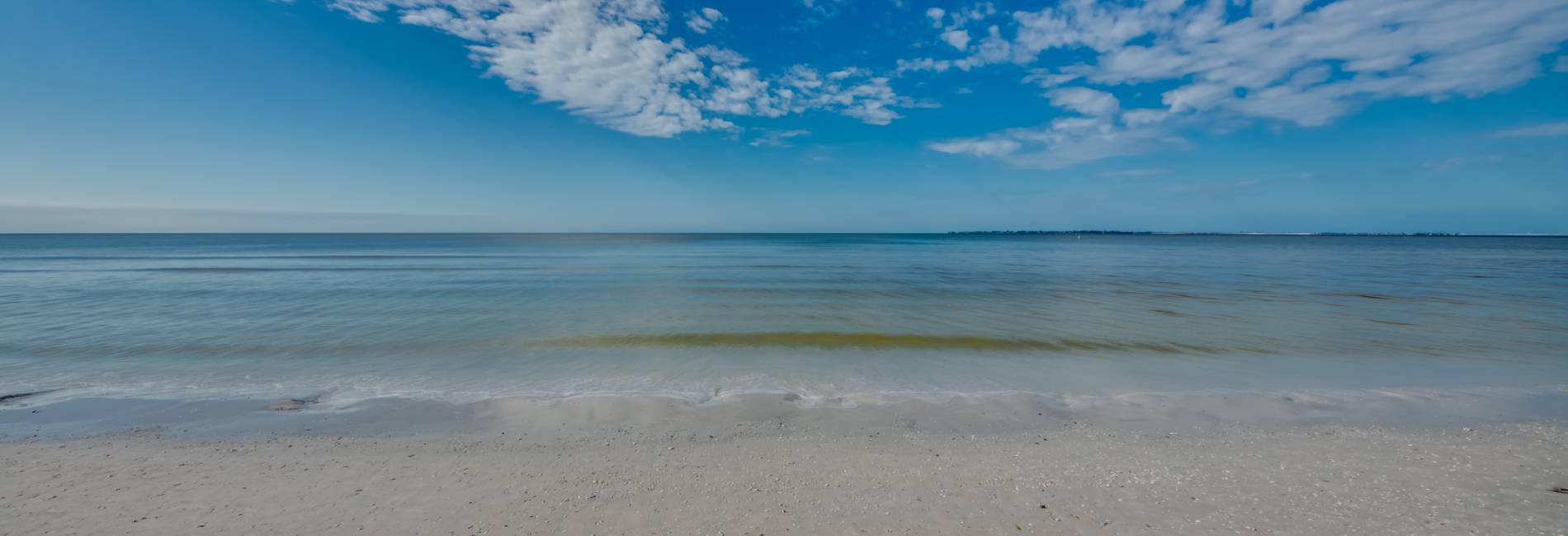
Framed in forests of mangrove trees, the shell mounds and ridges of Mound Key rise more than 30 feet above the waters of Estero Bay.
Prehistoric Native Americans known as the Calusa were non-agricultural hunting and gathering chiefdom that dominated the waters of southwest Florida for over 2,000 years. Mound Key is believed to have been the ceremonial center of the Calusa Indians when the Spaniards first attempted to colonize Southwest Florida in the early 1500s.
Located in Estero Bay, visitors typically launch from Koreshan State Park or Lovers Key State Park to access the park.
The park is accessible only by boat and there are no facilities. Interpretive displays along the trail crossing the island help visitors discover the history of the island. Mound Key is managed by Koreshan State Park, in Estero.

Experiences

Hiking
A 0.75-mile linear hiking trail traverses the island’s tropical vegetation. The trail takes you over steep shell mounds created by the Calusa Indians, the tallest being 33 feet, making for some of the most extreme terrain in the area.
Amenities

Historic Site
The entire island of Mound Key is one large historic site. From the Calusa Indians who built the site, to Spanish explorers who discovered and colonized Florida, up to turn-of-the-century frontier settlers, this site is rich in Florida history.
Interpretation of the site is limited at this time, but much information can be found on this website and brochures are available at Koreshan State Park.

Nature Trail
A 0.75-mile linear hiking trail traverses the island’s tropical vegetation. The trail takes you over steep shell mounds created by the Calusa Indians, the tallest being 33 feet, making for some of the most extreme terrain in the area.
History
Mound Key is rich in early Florida history. The island was developed over 2,000 years of the Calusa Indian civilization. The site likely began as a flat, mangrove-lined oyster bar that barely rose above the shallow waters of the Estero Bay.
Located in the center of the estuary, food was easy to find. As the native population grew, the remains of their food were collected and heaped into middens.
Mound Key is believed to have been the cultural center for the Calusa, known as Calos.
The Calusa had their first encounters with Europeans in the early 1500s when the Spaniards were exploring the Caribbean and peninsula of Florida. The first recorded European contact with the Calusa was in 1513 when Spanish explorer Juan Ponce de Leon landed in the area.
In 1566, Spain’s first Governor of Florida, Pedro Menenzez de Aviles was appointed at this site. This was also the site of the first Jesuit mission to the New World, San Antonio de Carlos. The Spanish period of the site was hard fought and short lived and was abandoned by 1569. However, with the Spaniards came diseases for which the natives had no immunity. This would lead to the demise of their population when combined with continued warfare with local tribes and the end of their once great society occurred around 1750.
However, this would not be the end of human occupation of the island. The site was frequented by pirates and fisherman throughout the next several decades until it was homesteaded by Frank Johnson in 1891.
The Johnsons brought in other families to farm the island until the property was sold to the utopian Koreshans in 1905.
Today most of the island is preserved as a state archaeological site.






